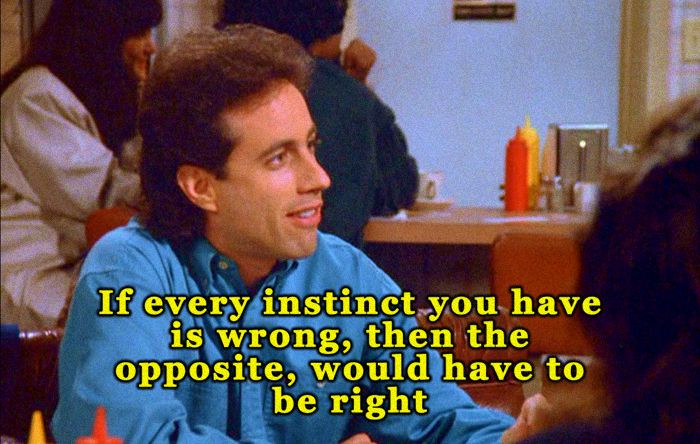 I was suffering from boringconferenceitis. A couple of decades into my work in international education and it was a full blown illness. While most won’t talk about it, because of fear of not being invited back to the conference scene or seeming ungrateful, many suffer from it.
I was suffering from boringconferenceitis. A couple of decades into my work in international education and it was a full blown illness. While most won’t talk about it, because of fear of not being invited back to the conference scene or seeming ungrateful, many suffer from it.
Boringconferenceitis is caused by attending too many boring conferences. While these conferences may be highly practical for many who have specific roles in higher education, I simply found them to be mostly boring because they lacked creativity and seemed to morph into a “show and tell” of sorts: “This is what we do at our university.” In many cases, I found that to be, well, boring, as it implied that the practices and approach could simply be replicated elsewhere.
Interestingly enough there is actually a conference called the Boring Conference – LOL! Some of the sessions I’ve attended over the years could certainly fall into prime time at that type of conference!
Boringconferenceits is a horrible ailment. It requires going through the motions, thanking people when your heart isn’t 100% into it, feeling a bit like a cog in a wheel, putting your most creative self in storage, and tucking away the part of you that would have given a limb to work in the field of international education. It hurts to suffer from this malady and I didn’t see a prescription to address it anywhere out there.
How did I conquer the pain and suffering of boringconferenceitis? I sat back and reflected over YEARS of conferences and found the common denominator of what was lacking for ME:
There was really no examination of who I was in the process of higher education besides my job description/duty or how I played into the mission of the university. There was a lot of talk about culture, but little talk about what MY culture was, where it came from, and how it influenced how I worked and impacted those I served. I also felt that there was little reflection beyond a post conference rating/evaluation tool and truly no structured time built in to create action steps that facilitated implementation of ideas that would put me on a path for sustainable, team oriented programming.
I felt like a box on an org chart, devoid of personality and flavor. I felt like a vibrant color image fading to shades of grey. I felt like my soul was disappearing and that I may have been the only person in the room who could give a S#*t about the bling people stuck on my name tag and continually asked me what sponsored party I would be attending that evening.
 I tackled this ailment by trying the opposite of everything I’ve seen done in higher ed conferences. This idea was <hysterically> reinforced most recently by an old Seinfeld episode! Have you ever seen the one when George Castanza decides to do the opposite of everything he had ever done in his life? It is a riotous episode, and because George decides to do the complete opposite of his routine, he lands his dream job with the New York Yankees baseball team. So why not try something completely opposite to cure my boringconferenceitis? What was the worst that could happen?
I tackled this ailment by trying the opposite of everything I’ve seen done in higher ed conferences. This idea was <hysterically> reinforced most recently by an old Seinfeld episode! Have you ever seen the one when George Castanza decides to do the opposite of everything he had ever done in his life? It is a riotous episode, and because George decides to do the complete opposite of his routine, he lands his dream job with the New York Yankees baseball team. So why not try something completely opposite to cure my boringconferenceitis? What was the worst that could happen?
I set out to create a completely different conference that feels more like a retreat. This event meets at a beautiful event hall instead of a generic hotel conference space. We wear jeans or whatever feels comfortable. We don’t have an exhibit hall or sponsors to sell anything to us or give us stickers to put on our nametags. We don’t hand out agendas or bios of speakers. Instead, we do the opposite: We cap attendance to ensure that the program is intimate and that people can learn from the others in the room. We start with experiential exercises and trustbuilding so that the dialogue is authentic and heartfelt. We intentionally create space for reflection via journaling. We agree to shut down our smart phones for a few hours. Our speakers are not researchers or even formally in the field of higher ed, but they are well traveled, incredible storytellers, and seasoned facilitators. They lead, we trust and follow.
Last year, we did the opposite of what normally happens at a conference and magic happened. People were deeply moved. Some even cried, which absolutely blew me away. Some chose to leave their jobs within a year of our conference, while others went back to their work with more heart and soul than they could have ever imagined – feeling truly reinvoragted and recommitted. Several even opted to return to this conference again this year to see where the path would take them. This is what the Melibee Swarm on Culture, Identity, and Perspective is all about – reconnecting with self so that we can understand who we are and how we impact the journey of learning for others. The day and a half we have planned in Asheville this year (November 12/13) will build on the learnings from last year but be completely appropriate for those who are first time attendees. We do the opposite, and like George Castanza, it lead to something wonderful (besides a new sandwich and a date)!
Past participant, Tara Nygaard, has this to say about the Swarm last year. I’m so grateful that she used her storytelling skills to summarize a conference experience that is often hard to translate:
We hope you too will consider “surprising yourself” by joining us in Asheville. You can learn more about the Swarm here.
